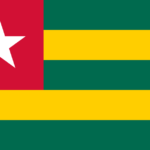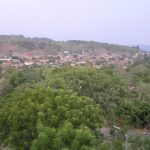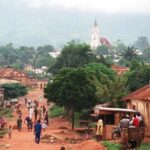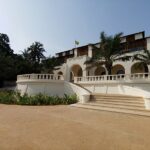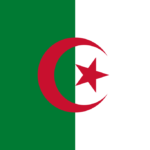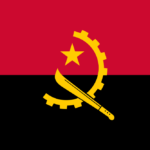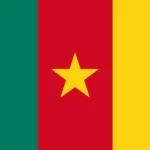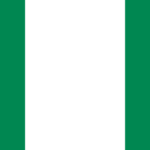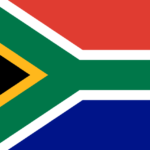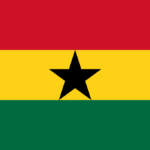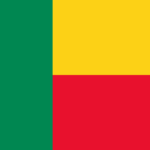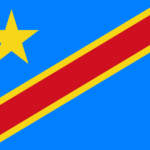Togo
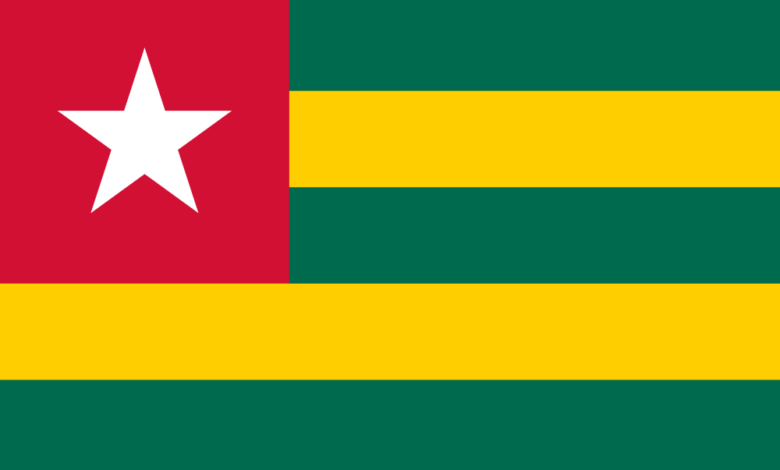
Togo, officially known as the Togolese Republic, is a captivating country nestled in the heart of West Africa. With a rich tapestry of history, culture, and geography, this nation is a hidden gem waiting to be explored. In this 2000-word article, we will take a deep dive into the diverse facets of Togo, from its historical roots to its modern-day presence on the global stage. So, let’s embark on this journey to discover the wonders of Togo!
Nestled in the western part of Africa, Togo is a country of significant historical importance and cultural richness. It shares its borders with Ghana to the west, Benin to the east, and Burkina Faso to the north. With the Gulf of Guinea embracing its southern coast, Togo is a picturesque tropical country with an area of approximately 57,000 square kilometers and a population of about 8 million.
Historical Footprints
The history of Togo is a tapestry woven with stories of various people groups that settled in the region between the 11th and 16th centuries. During the 16th to 18th centuries, the coastal region served as a European slave trading outpost, earning Togo the name “The Slave Coast.” In 1884, Germany declared Togoland as its protectorate, but after World War I, Togo came under French rule, gaining independence in 1960.
Geographical Wonders
Togo’s geography is diverse, ranging from rolling savannas in the north to wooded plateaus in the central region. The southern part features a blend of savanna and woodlands, extending to a coastal plain with lagoons and marshes. The highest peak, Mont Agou, stands tall at 986 meters, while the Mono River gracefully meanders through the country.
The Togolese Culture
Togo boasts a rich cultural heritage, with its official language being French. However, it’s the local languages, especially those of the Gbe family, that resonate with the Togolese people. Christianity is the dominant religion, with 47.8% of the population adhering to it. This cultural diversity is a testament to Togo’s vibrant and harmonious society.
Economy
Togo, a West African nation, boasts a unique economic landscape characterized by diverse agricultural products, mineral resources, and a challenging political history. In this article, we’ll delve into the key aspects of Togo’s economy, exploring its agricultural sector, industrial contributions, and infrastructure developments.
Togo, although considered a least developed country, plays a significant role as a regional commercial and trade center in West Africa. The country’s economy is deeply intertwined with its rich agricultural heritage, industrial endeavors, and an evolving infrastructure.
The Agricultural Sector
Diverse Crops
Togo’s agricultural sector is vital to its economy, contributing to approximately 30% of export earnings. The country cultivates a wide variety of crops, including coffee, cocoa beans, peanuts, cotton, cassava, jasmine rice, maize, and millet.
Cash Crops
Cotton stands out as a cash crop, providing a steady source of income. The fertile land, covering 11.3% of the country, is extensively utilized for agricultural activities.
2.3. Challenges
However, Togo has faced economic challenges due to “low market prices” for its major export commodities and political instability during the 1990s and 2000s.
Industrial Contributions
Togo’s industrial landscape is marked by several key sectors, including breweries and the textile industry. The country can boasts as the fourth-largest phosphate deposits globally, with an annual production of 2.1 million tons, making phosphate a crucial contributor to the economy.
The country also possesses reserves of limestone, marble, and salt, allowing for the production of cement and other essential materials.
Structural Reforms
Togo has made progress in liberalizing its economy, particularly in trade and port activities. However, the privatization program of the cotton sector, telecommunications, and water supply has faced obstacles.
Infrastructure
Togo’s infrastructure plays a pivotal role in its economic development. Here, we explore its road, railway, air, and water transportation systems.
Road Network
Togo has a road network of 7,520 km. Two major highways, N1 and N2, connect the capital, Lomé, with the rest of the country and neighboring nations. The Trans–West African Coastal Highway enhances connectivity within the ECOWAS region.
Railways
The country has a railway network of 568 km, primarily operated by Société Nationale des Chemins de Fer Togolais. These railways facilitate the transportation of phosphate and other goods.
Airports
Togo features eight airports, with Lomé–Tokoin International Airport serving as the major international gateway.
Water Transport
The country has limited navigable waterways, with the Port of Lomé serving as the primary container port.
Ethnic Groups in Togo
Togo boasts a multitude of ethnic groups, adding to the vibrancy of its culture. The most prominent among these are the Ewe, who constitute 32% of the population, primarily in the southern regions. Additionally, the Kotokoli, Tchamba, and Kabye communities are vital, representing 22% of the population. The Ouatchis, comprising 14% of the population, have a unique cultural identity. There are also the Mina, Mossi, Moba, Bassar, and the Tchokossi of Mango, constituting about 8% of the population.
Religion in Togo
Religious diversity is another fascinating aspect of Togo. In 2012, the religious landscape included 33% traditional animists, 28% Roman Catholics, 20% Sunni Muslims, and 9% Protestants. Additionally, 5% adhered to other Christian denominations, and 5% were not affiliated with any religious group. Over the years, the religious composition has evolved, with 42.3% of the population identifying as Christian, 14% as Muslim, and 36.9% following indigenous beliefs. Togo’s religious history is marked by the influence of Catholic and Protestant missionaries.
Linguistic Diversity
Togo is a linguistic kaleidoscope, with Ethnologue listing a staggering 39 distinct languages spoken in the country. French is the official language, widely used in education, media, and administration. Ewe and Kabiyé were designated as national languages in 1975. Ewe is prevalent in the south, while Kabiyé serves as a trade language in some northern towns. The government’s decision to promote English learning among citizens further highlights Togo’s commitment to linguistic diversity.
Health and Healthcare
The right to health is a critical indicator of a nation’s well-being. Togo faces challenges in this regard, with the Human Rights Measurement Initiative revealing that it fulfills 73.1% of its expected right to health based on income. The situation is better for children, with Togo achieving 93.8% of expected health rights. Among adults, the country meets 88.2% of expected health standards. However, in terms of reproductive health, Togo falls short, fulfilling only 37.3% of its expected obligations.
Health expenditure in Togo was 5.2% of GDP in 2014, ranking 45th globally. The country’s infant mortality rate stands at approximately 43.7 deaths per 1,000 children. Life expectancy is 62.3 years for males and 67.7 years for females. Notably, female genital mutilation affects 4% of women in Togo. Challenges remain, but efforts are being made to improve healthcare and maternal mortality rates.
Education System
Education in Togo is compulsory for six years. In 1996, the country had a gross primary enrollment rate of 119.6% and a net primary enrollment rate of 81.3%. By 2011, the net enrollment rate had risen to 94%. However, the education system has faced challenges, including teacher shortages, lower educational quality in rural areas, and high repetition and dropout rates. Education is a work in progress, and Togo continues to strive for a better-educated populace.
Government and Politics
Togo’s political landscape has seen its share of turbulence. After gaining independence, it went through periods of one-party rule and military coups. In recent years, there have been strides towards multiparty elections and political openness, though challenges persist.
Foreign Relations
Togo’s foreign policy is nonaligned, but it maintains historical ties with Western European nations like France and Germany. The country is also a member of several international organizations, actively participating in West African regional affairs and the African Union.
Military Might
The Togolese Armed Forces, known as FAT, consist of the army, navy, air force, and gendarmerie. Togo allocates around 1.6% of its GDP to military expenditures and maintains military bases across the country.
Human Rights Landscape
Togo’s human rights history has been checkered with issues, including allegations of security force abuses, infringement of citizens’ privacy rights, and restrictions on freedom of the press. The country is grappling with challenges like discrimination against women, child abuse, and societal discrimination against marginalized groups.
Natural Beauty
Togo’s natural beauty is awe-inspiring. From pristine beaches along the Gulf of Guinea to rolling savannas and lush woodlands, this country offers a diverse range of landscapes waiting to be explored.
Protected Areas
Togo is home to several protected areas, including the Abdoulaye Faunal Reserve, Fazao Malfakassa National Park, Fosse aux Lions National Park, Koutammakou, and Kéran National Park. These natural havens are a testament to the country’s commitment to biodiversity conservation.
Challenges and Progress
Togo has faced numerous challenges in its journey towards progress. From political transitions to economic development, the nation is navigating a path towards stability and prosperity.
Conclusion
Togo, with its rich history, diverse geography, and vibrant culture, is a captivating destination for travellers and a country with immense potential. As it continues to grow and evolve, Togo holds a unique place in the heart of West Africa.
National Anthem
Terre de nos aïeux
The national anthem of Togo, titled “Land of our forefathers” (French: “Terre de nos aïeux”), was composed by Alex Casimir-Dosseh. It served as the country’s anthem from its independence in 1960 until 1979. In 1979, it was replaced by a…
